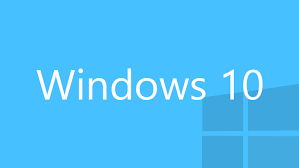Microsoft is still “The Standard” for PC operating systems worldwide, even with all the success of Apple’s OSX and Unix platforms in recent years. Microsoft claims that about 1.5 billion people are using Microsoft OSes today. The company has a long history of upping the OS game year after year, some more successful than others. After Windows Vista, Microsoft went back to numbering its operating systems. The successful Windows 7 was followed by the less liked Windows 8 and now the jump to Windows 10, after Microsoft decided in 2014 that it would not go to Windows 9. Now the company has unveiled Windows 10, which will be released in late 2015, and some of the new features to the world.
From a business standpoint, Microsoft is testing new waters in offering the Windows 10 update to current users of Windows 7, 8, and 8.1 for free. This free download is available for one year after the Windows 10 release date, after which Microsoft will charge a one time licensing fee, though it hasn’t released details about the fee.
Here are some of the revealed features:
Cortana comes to PC and Tablet
The Microsoft digital assistant will be included in Windows 10. Cortana is Microsoft’s answer to Apple’s Siri and acts as a personal assistant controlled by voice commands or typing. The system will be ported to PC and tablets after being available on Windows phones. The system is region specific and will be available in specific countries at the release date.
Project Spartan replaces Windows Explorer
Windows 10 will come with a new web browser codenamed Project Spartan. This browser will replace Internet Explorer, however it is not clear what Microsoft will do with the brand name. The new browser is being described as a new layout and built with interoperability in mind. By that Microsoft means that the same browser experience will be available across computing platforms, from PC and notebooks to tablets and smartphones. Some are describing the new browser as similar in layout to Google Chrome and Firefox, which may not be a bad thing as users can switch more easily between different browser.
Microsoft points out the integration of Spartan with Cortana will enable users to search the web by voice commands and provides the ability to read webpages.
XBox Live on the Windows 10 PCs
The combination of Xbox Live and Windows 10 expands the use of the XBox Live network to Windows 10 computers. Users can capture, edit and share their gaming achievements with Game DVR. Gamers will be able to stream their XBox One games from the console directly to their PC within their own homes. In addition, games developed for DirectX 12 application interface in Windows 10 will run faster and smoother. This will of course require that the games and graphic chips supports this functionality. In addition an XBox One Gold level membership will be required.
Office for Windows 10
With Windows 10 will also come a new Microsoft Office package that will include touch control capability. Again, Microsoft will bring the user experience for mobile devices and desktop users closer together. The new desktop office suite is still in development, though.
Continuum Mode
On 2-in-1 devices Windows 10 senses in what mode (keyboard, mouse and touch or tablet) the device is being used and adjusts the input method accordingly.
Universal Apps
Microsoft will also release many new apps that will function all the same on a variety of platforms. This aims to provide a cohesive user experience in the future.
Microsoft also announced HoloLens and Surface Hub as standalone products that will work with Windows 10. HoloLens is an augmented reality system, while Surface Hub is large screen screen with PC functionality. Both will be described in more detail in separate posts. (Microsoft Shows Off HoloLens Augmented Reality System) (Microsoft Announces Surface Hub as a Collaborative Display Tool)
If you are interested in more details, you can access the full video recording (it’s 2h and 20 min long) on the Microsoft website.
Analyst Comments
While Windows 10 is still in development, it seems clear that Microsoft is aiming at creating a more cohesive software platform, very similar to the development at Apple where the latest OSX versions are moving towards an iOS integration. While this makes a lot of sense for Apple, it is unclear what this will do for Microsoft. Mobile systems such as smartphones, phablets and tablets are still behind in processing power and screen sizes, any implementation of a mobile OS limits the functionality of a PC-based OS. In the case of Apple, there are many more users of the mobile version than there are users of OSX. Making the OSX more iOS-like may draw iOS users into the Apple PC infrastructure, a strategy that seems to work for Apple.
Microsoft seems to be reversing this idea by making Windows 10 look and behave like Windows Phone. Since Windows is still the baseline OS in the PC world, the company seems to want to entice Windows PC users to move to the Windows Phone universe. This is a very interesting approach, and may work for consumers. However, in the end it will come down to cost for the manufacturer. With Android being more or less free to the smartphone manufacturer, Microsoft has a steep hill to climb or decide to change its business model. Clearly, this is something it seems willing to explore as the one year free upgrade to Windows 10 indicates. – Norbert Hildebrand

